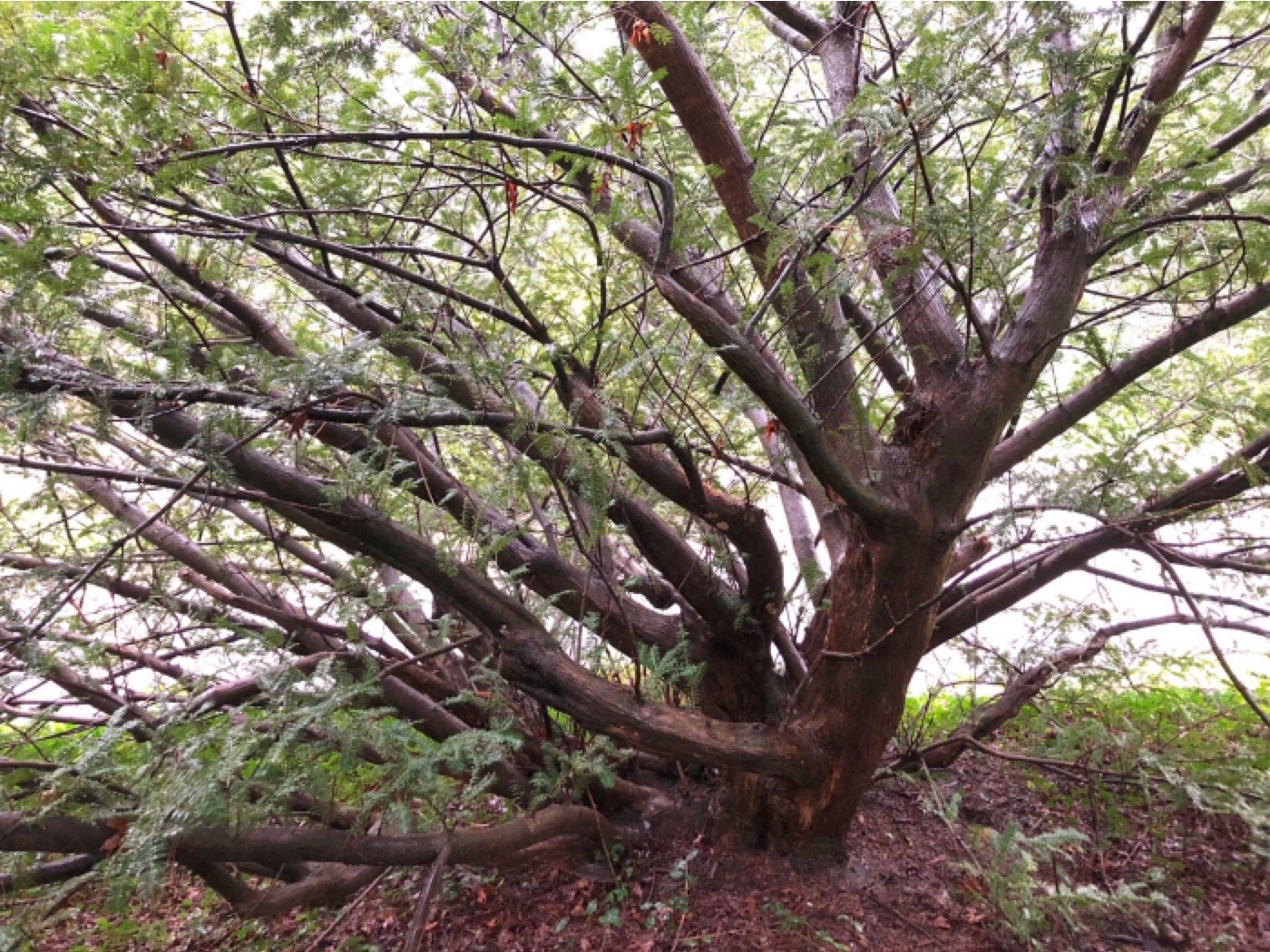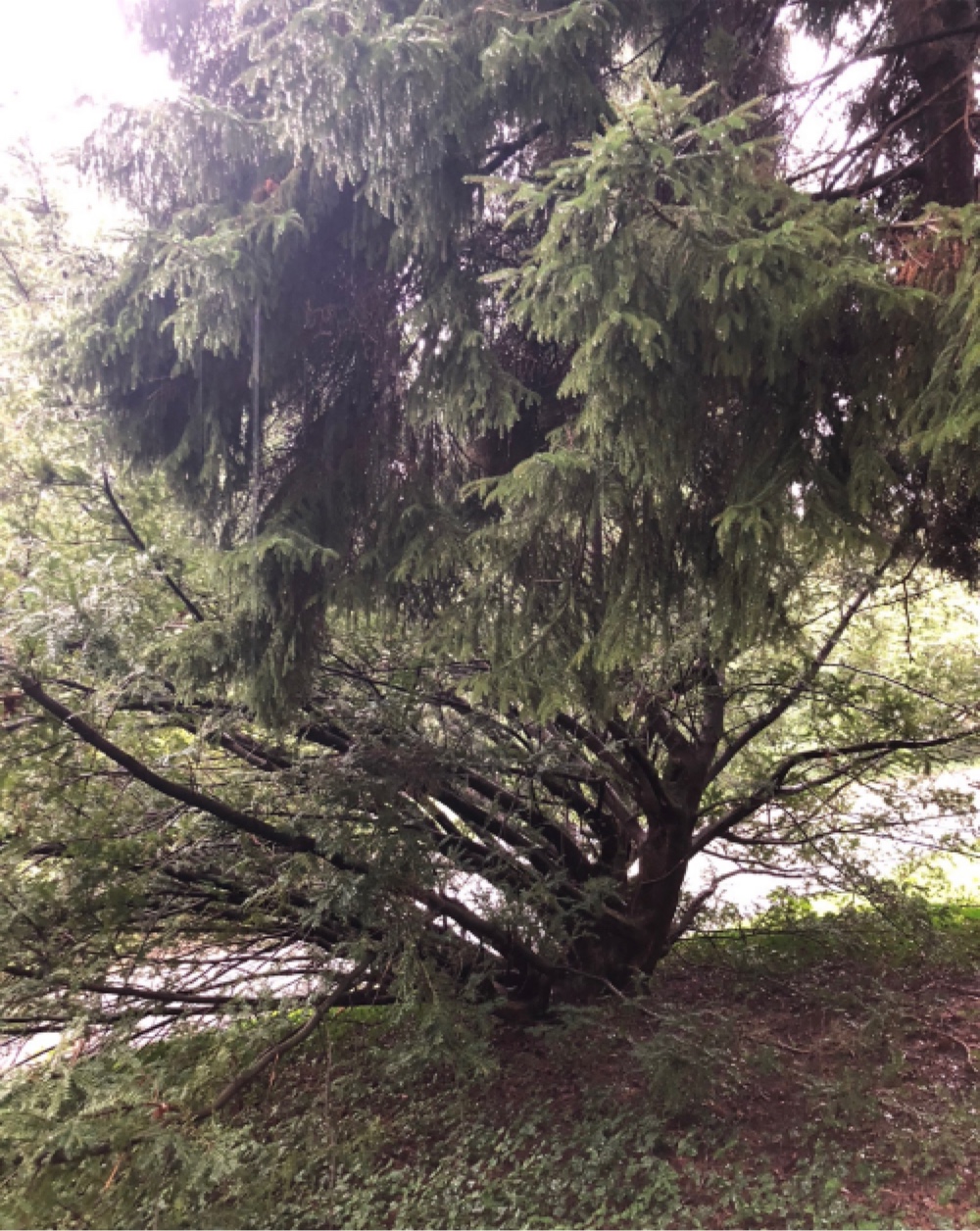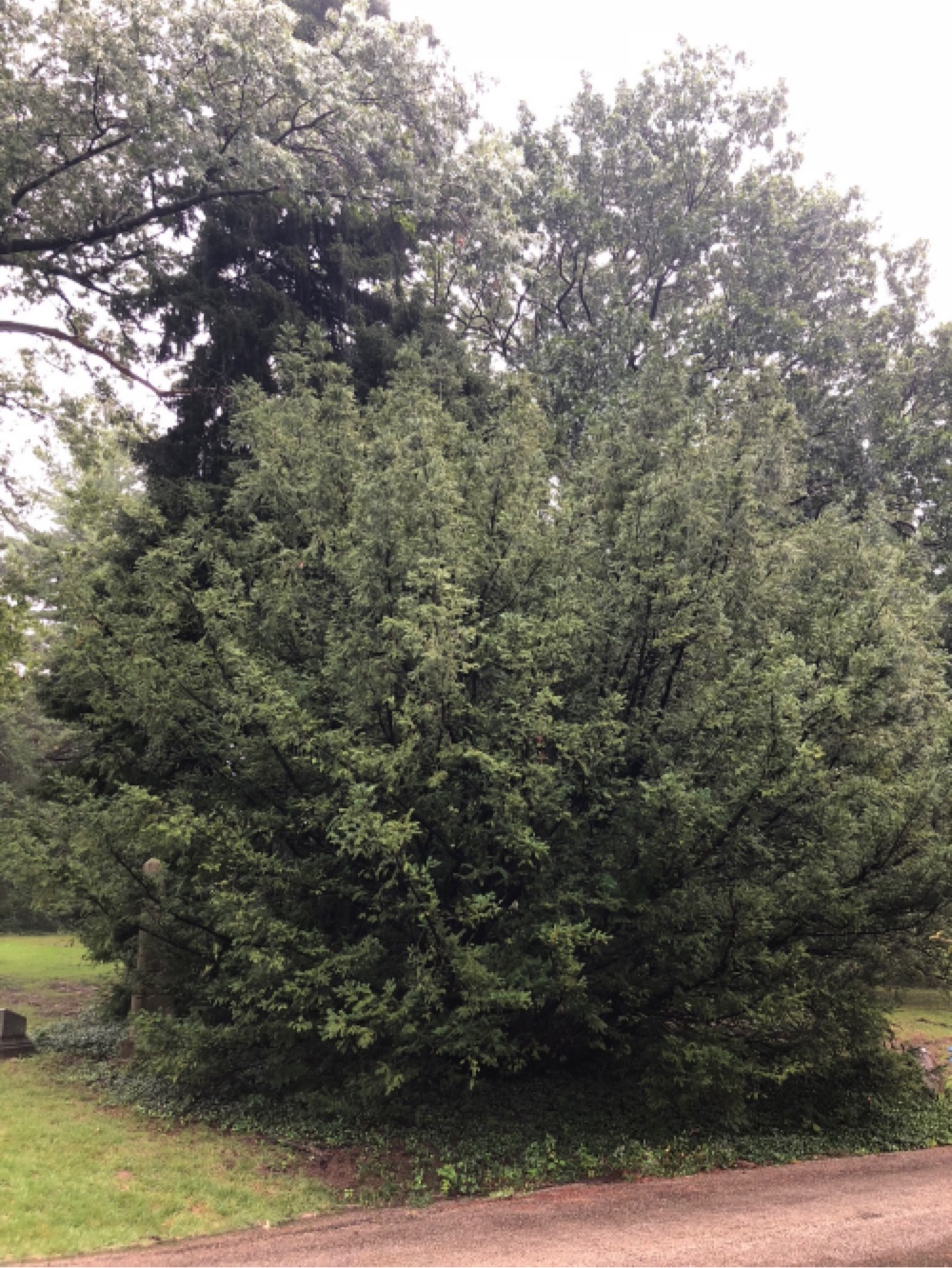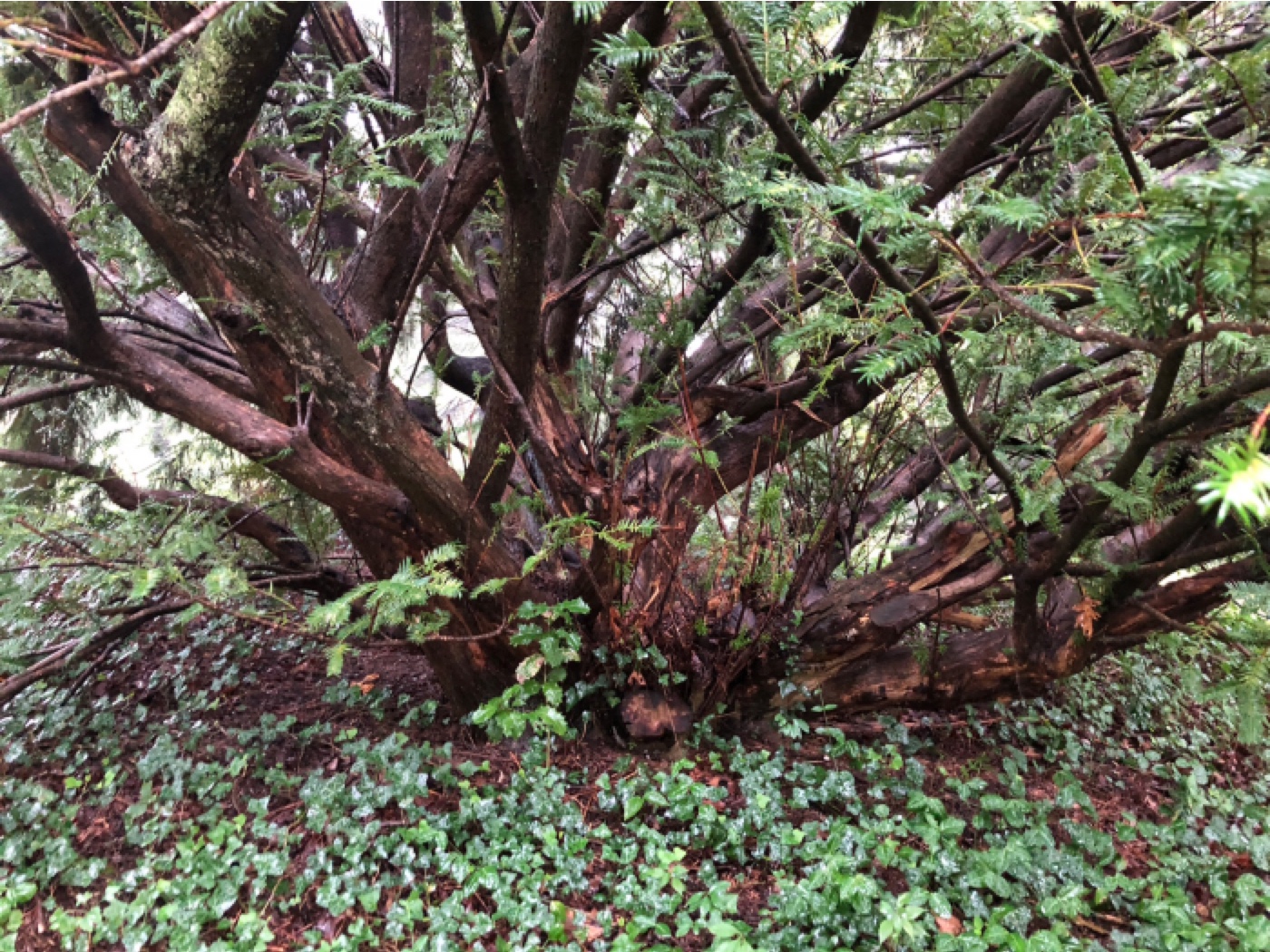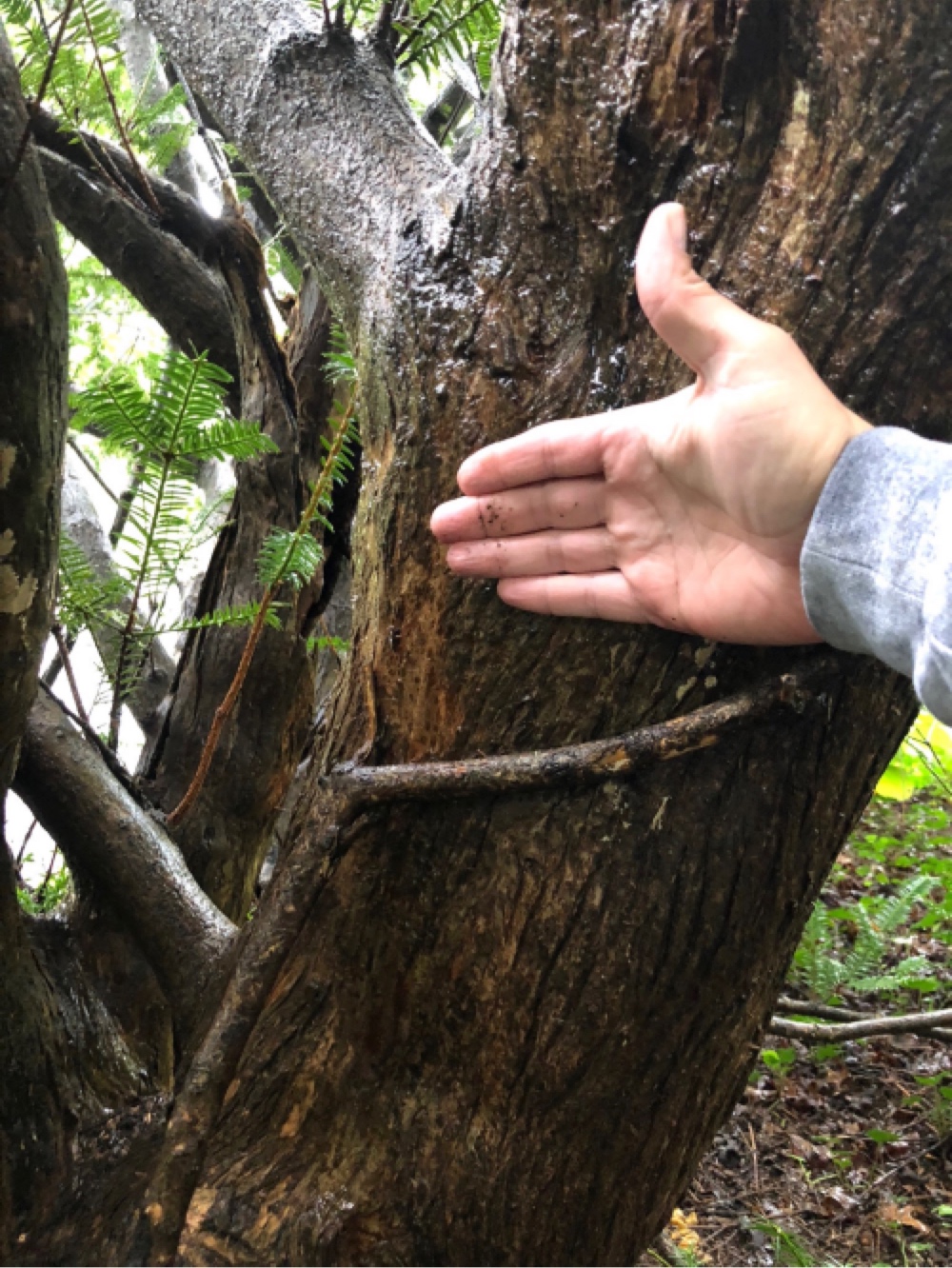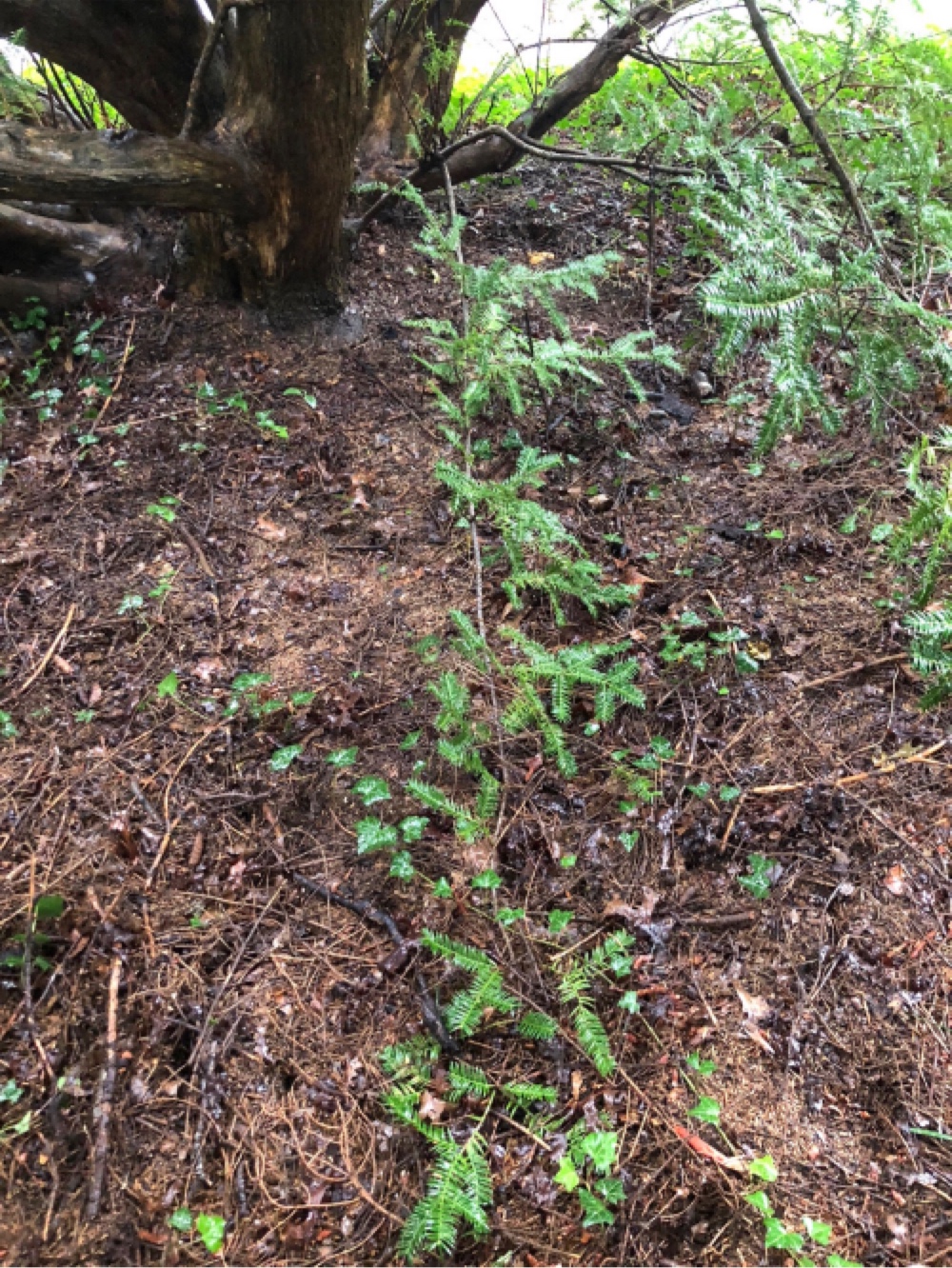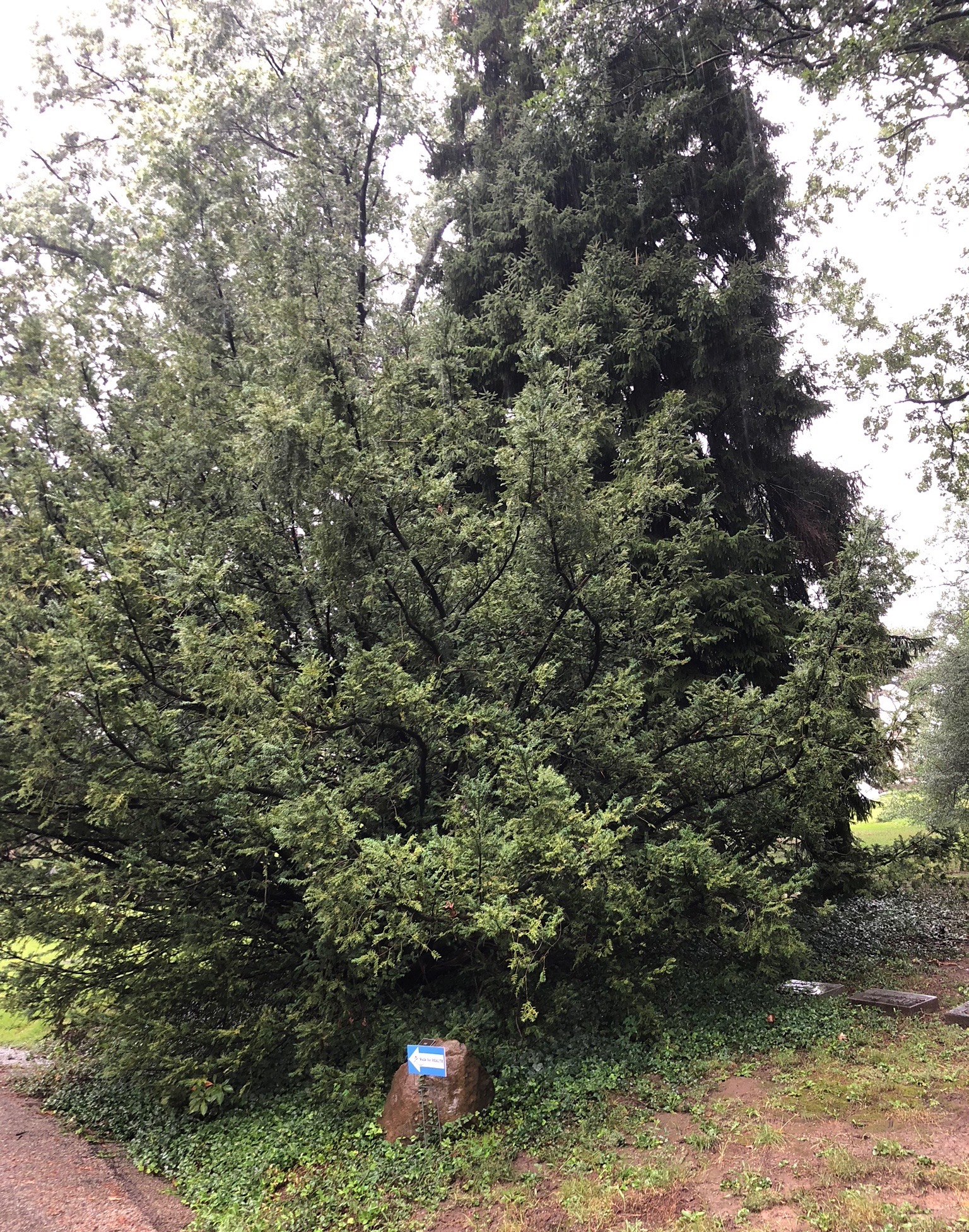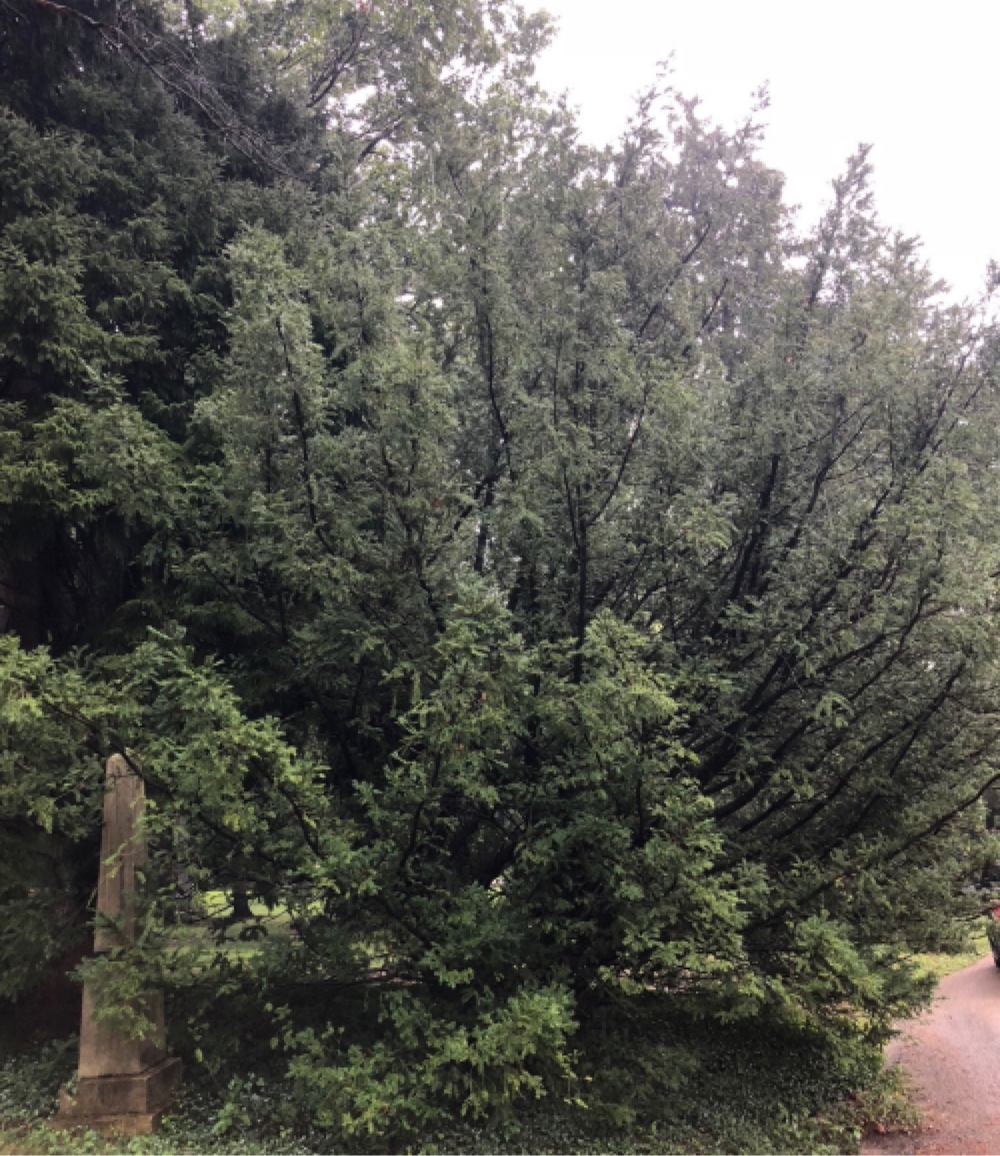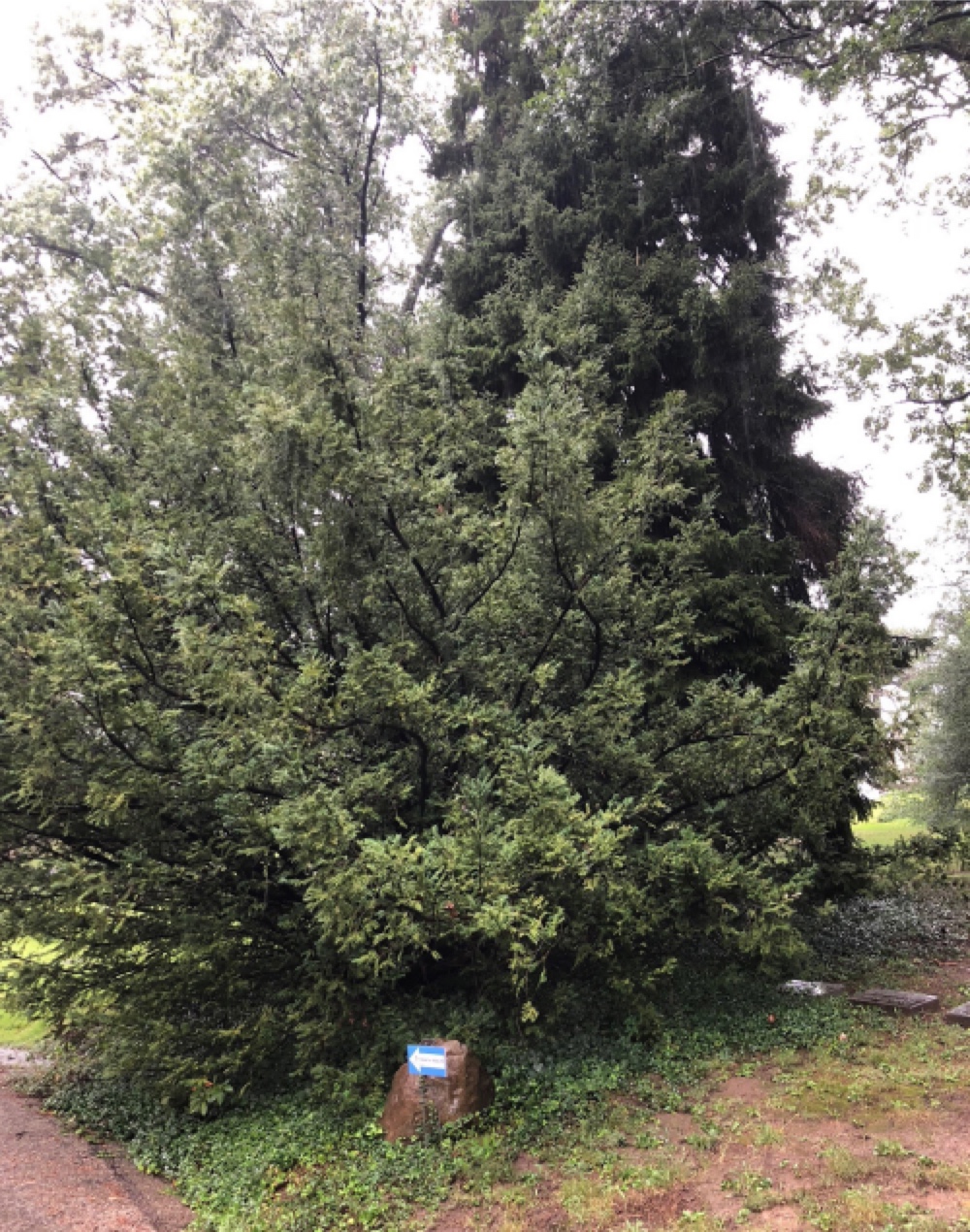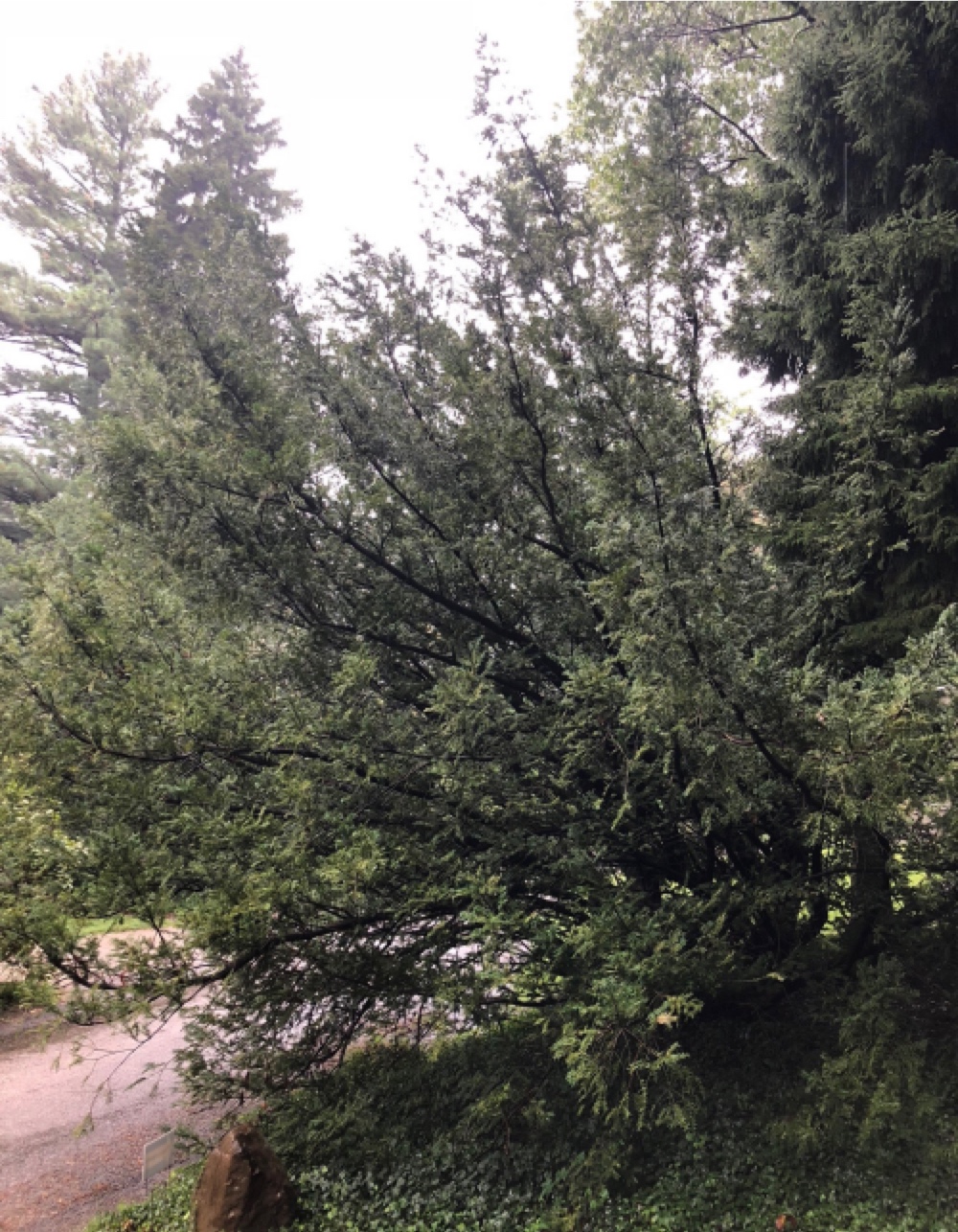2024 UPDATE: REVISED to TORREYA NUCIFERA (Japan) Editor's note: Torreya planter in Cincinnati, Patrick Murphy, wrote: "... I was planning on going back to visit the Torreya in their collection and I had called to find its location since it is such a large space. I talked to the lead arborist who told me they had someone look at it and they determined it was actually a Torreya nucifera."
Barlow then checked the Ohio champion website: No Torreya champion is listed in Ohio, nor is it listed on the cemetery / arboretum website.
2021 UPDATE (OUTDATED / SEE 2024 UPDATE ABOVE): Connie Barlow re-checked the national champion site link directly below. It no longer works. Moreover, FLORIDA TORREYA (Torreya taxifolia) is no longer listed as a species on the champion site. Perhaps it was removed because, as a cutting-grown plant, this Ohio specimen lacked the single stem of a seed-grown Torreya — and single stem is part of the core definition of what distinguishes a tree from a shrub. This Ohio specimen gained "champion" status only when the historic old "Norlina Torreya Tree" deteriorated in health. See the old photos on our website at this page: Norlina NC Torreya.
OUTDATED / SEE 2024 UPDATE ABOVE: However, this shrubby cemetery specimen is still listed on State of Ohio Champion Trees website, but of course listed within the set of "Non-Native Big Tree Champions." There it records the measurements, plus "Nominator: Brian Heinz and Spring Grove Cemetery."
Note: In this video you will hear Torreya taxifolia referred to as "Stinking Cedar." It is not a cedar and it does not stink; so this older common name is being replaced by the more accurate "Florida Torreya."
SITE VISITS BY FRED BESS (JAN 2017 AND DEC 2019):
Don't be fooled by the outer gear that Fred Bess is wearing. This photo is 3 years later than the photo directly above it.
Here you can see the tree from its opposite side.
Because a tall conifer (Norway spruce?) is behind and left, it is a little more difficult to discern the actual outline of this rather spherical, branchlet-rooted (and therefore multi-stemmed and shrubby) tree.
Fred reports, "The Cinci tree is still looking good as ever."
MAY 2021 UPDATE by FRED BESS: The PHOTO BELOW shows the results of my attempt to root T. tax cuttings. I started this cutting project December 2019, when I collected 25+ cuttings from the Spring Grove Cemetery tree in Cincinnati.
I followed the guidelines on the Propagation page. Pictured here are the cuttings that worked.
ADDITIONAL ONLINE RESEARCH BY PAUL CAMIRE 2018:
SITE VISIT BY PAUL CAMIRE - 24 SEPTEMBER 2018
PHOTOS ABOVE & BELOW confirm that this "tree" originated not from seed but from a branchlet cut from an existing tree and then rooted. The high-resolution and full size version of the photo above left "shows a couple branches lined with male structures," Paul Camire said.
ABOVE CENTER: Paul Camire captured on film this long branch trending from the base in the shady side of the tree. This is an important observation, which has been seen among old torreyas growing at Harbison House NC (photo of Jack Johnston with the branch, 2nd row of images) and at Biltmore Gardens NC (time code 25:44 of the posted video.
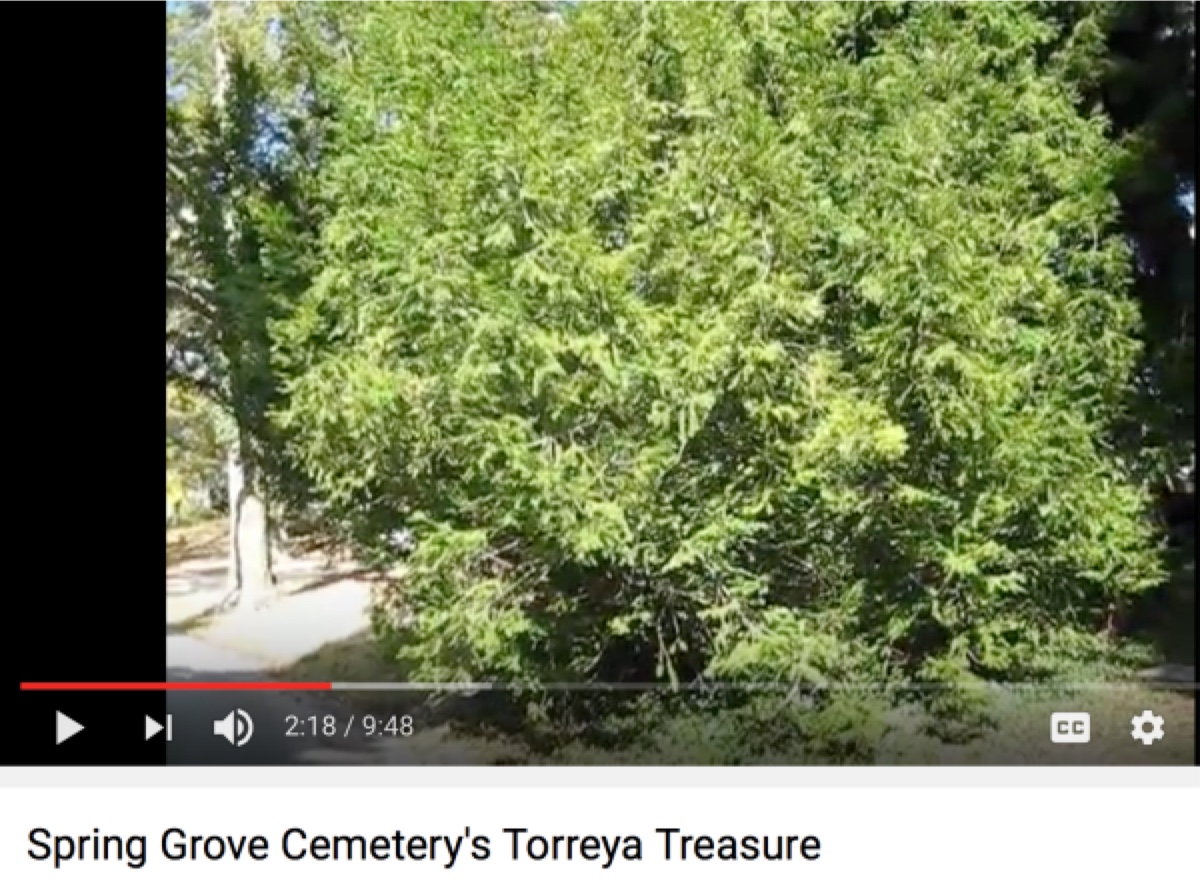
VIDEO 2010 by Jack Scheper, who writes, "I was delighted to find a robust, healthy torreya happily thriving at the beautiful Spring Grove Cemetery and Arboretum in Cincinnati, Ohio. Come along on this video field trip and I'll show it to you along with its Japanese cousin."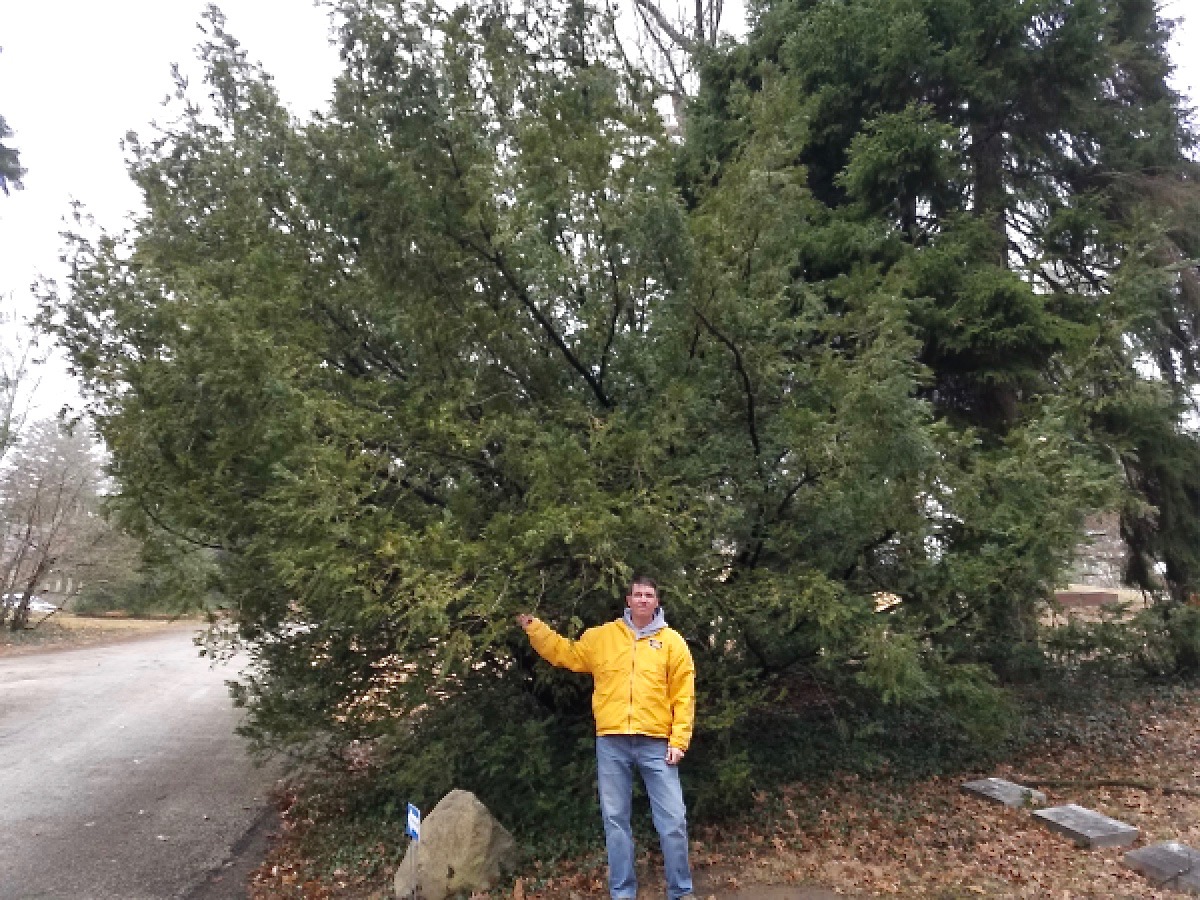
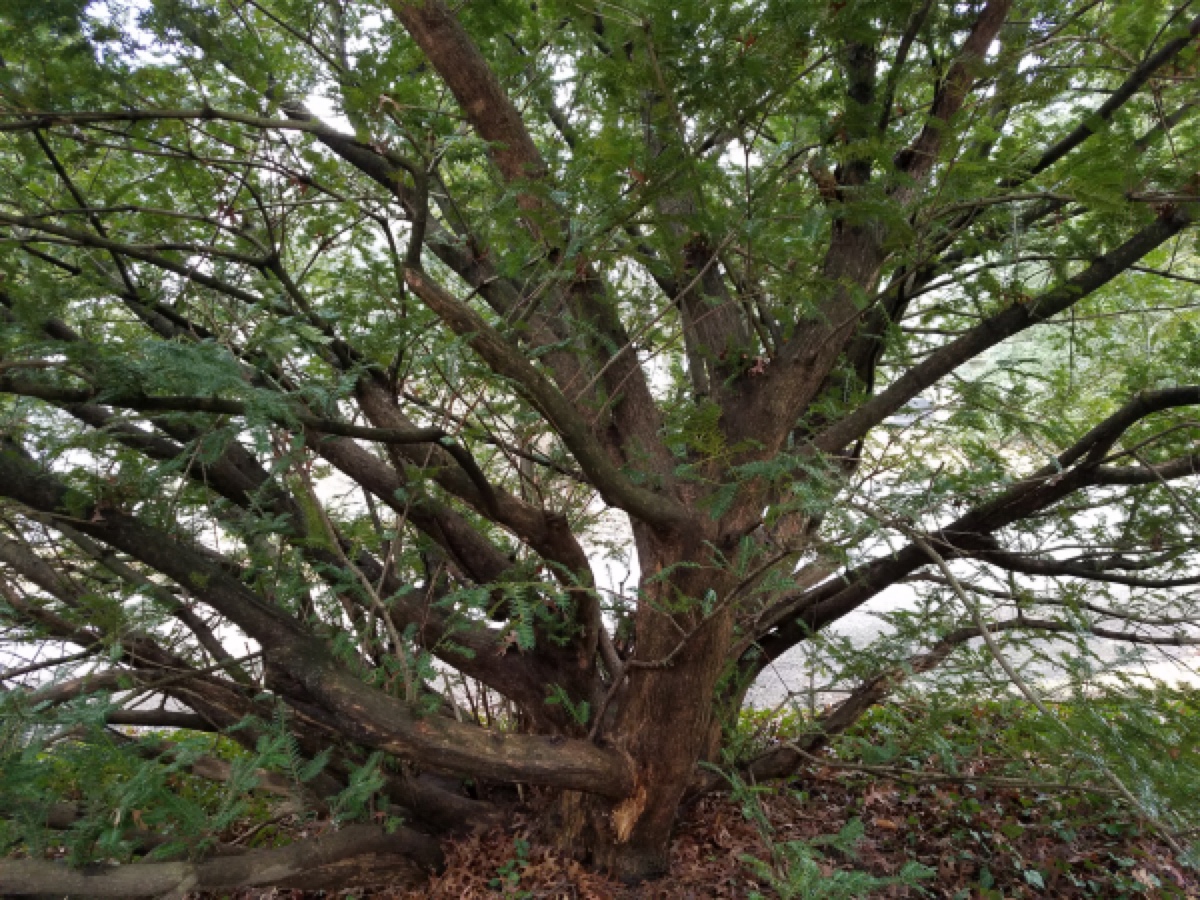
PHOTOS ABOVE: January 2017 Fred Bess (Cleveland OH Torreya Guardian; photo left)
visited the newly declared "national champion" Torreya taxifolia at Spring Grove Cemetery. His conclusion: "It seems obvious that it is cutting-grown [not from seed], as it is an oversized bush."
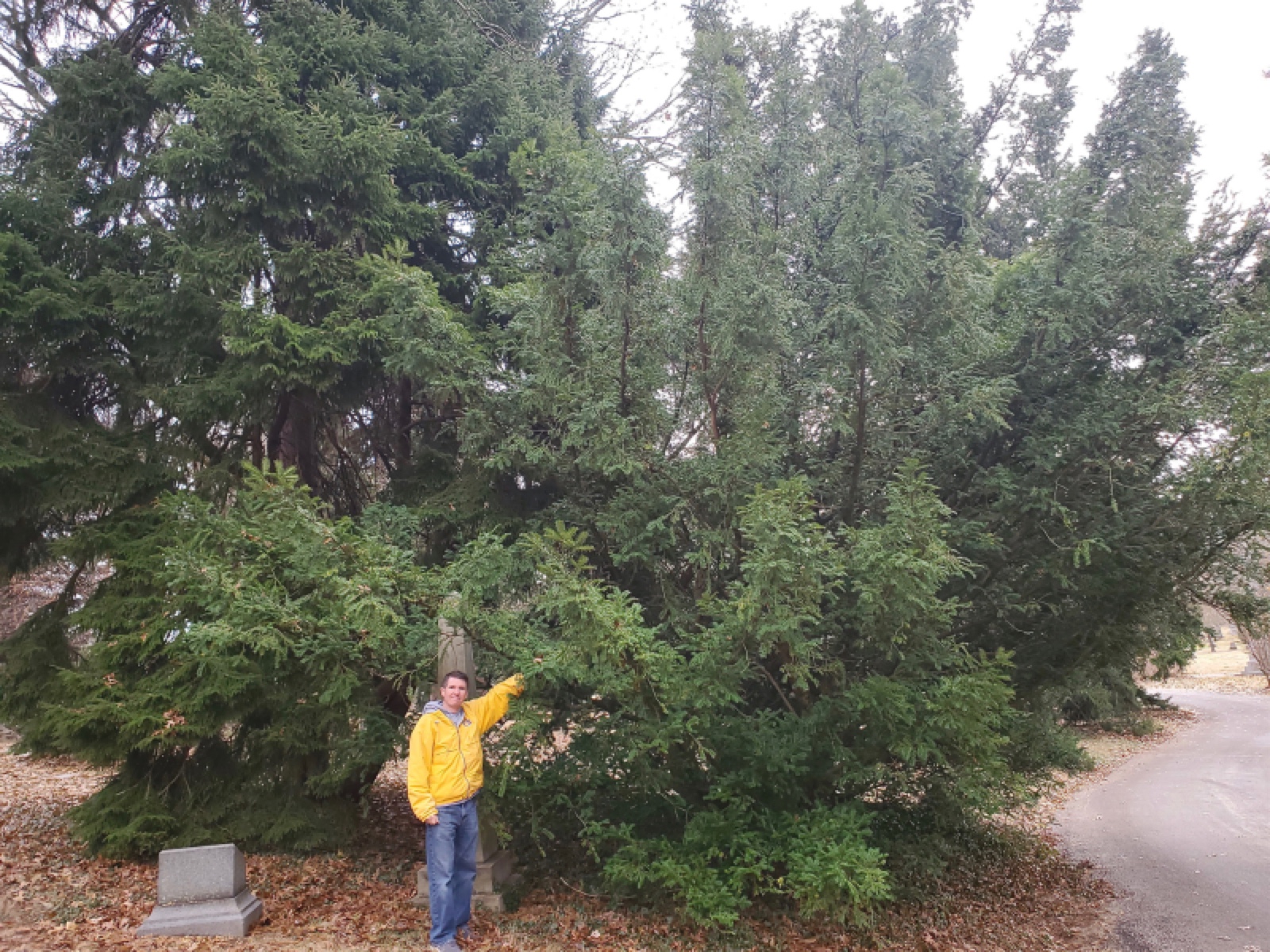
PHOTO LEFT DEC 2019: 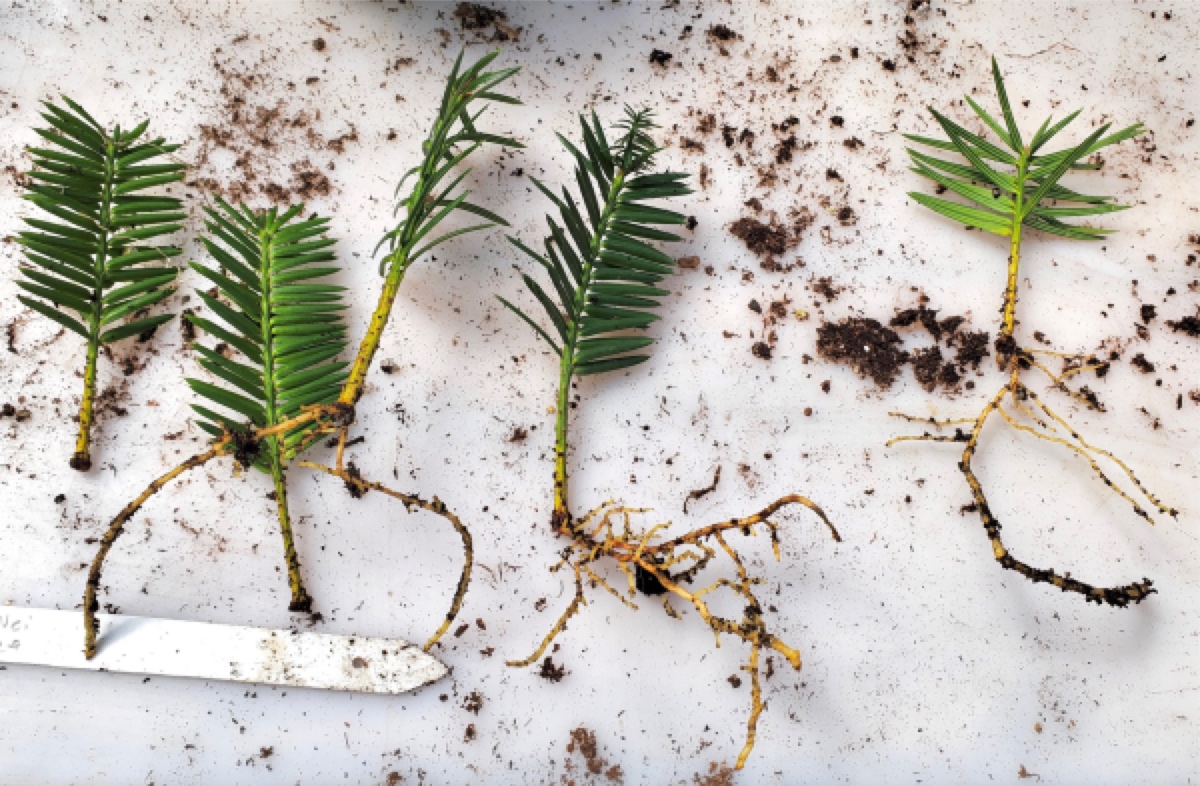
Karl Kern Tree / Wyoming Nurseries / Cincinnati - Arnold Arboretum report by Irina Kadis notes that Karl Kern supplied Arnold Arboretum with plants in 1962 and that there was a large specimen in their area that survived perfectly. This specimen could have been the Spring Grove Cemetery tree, but possibly not. Further investigation may be warranted if this nursery was supplying Torreya trees to this area in the 1960s.
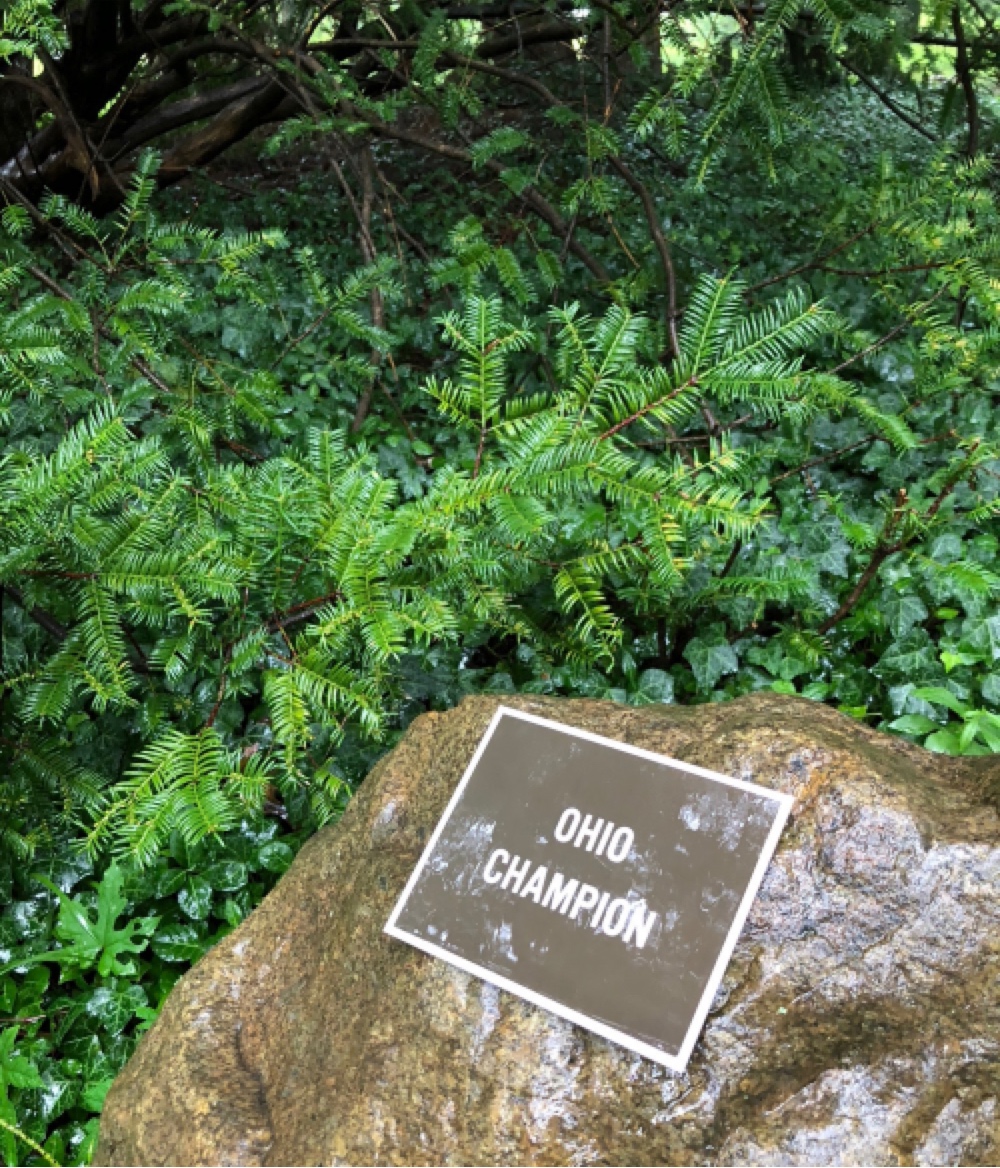
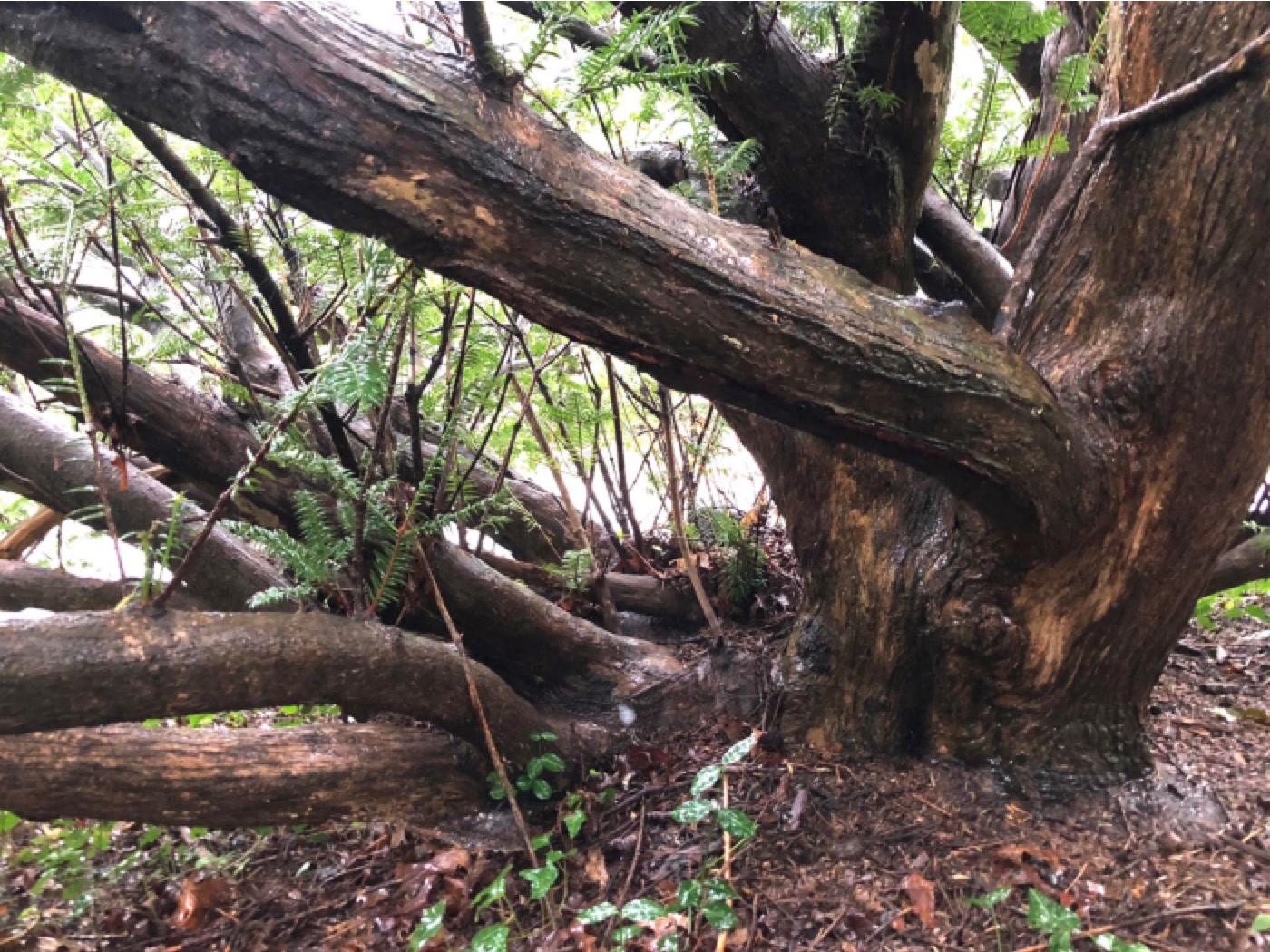
Editor's note: A current hypothesis is that, while seed-grown Torreya have demonstrated an ability to produce opposite-sex branches from its primary gender, a rooted branchlet tree is probably incapable of producing the non-dominant gender. Thus, while the Cincinnati torreya appears to be male, the pair of 30-year-old rooted branchlet torreyas in Hawthorne Park of Medford Oregon appear to be female (but have no source onsite of torreya pollen). Visit our Medford Oregon torreya webpage.